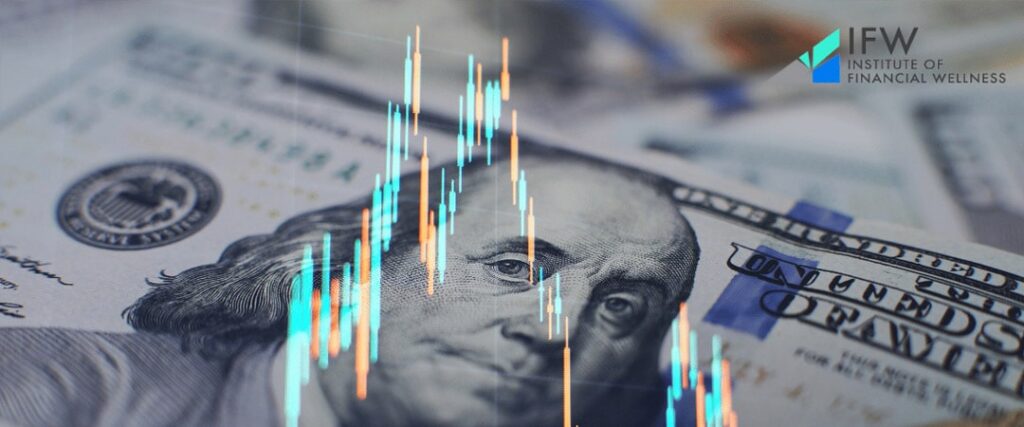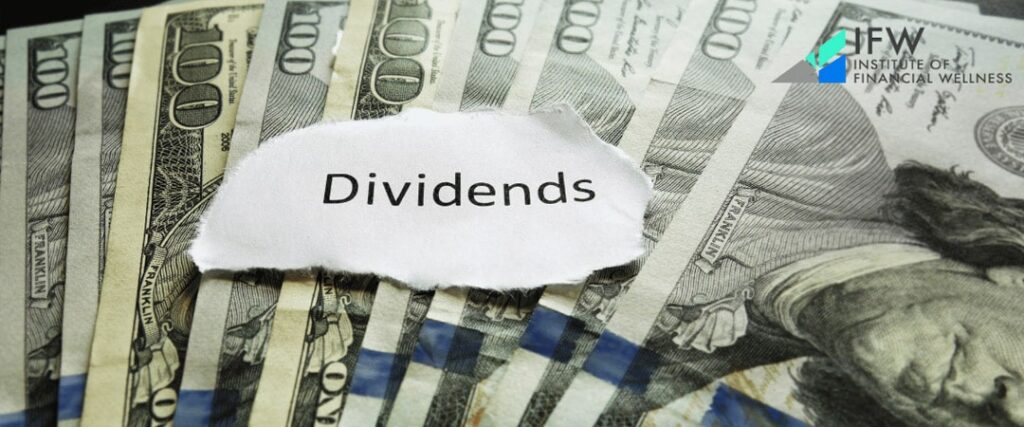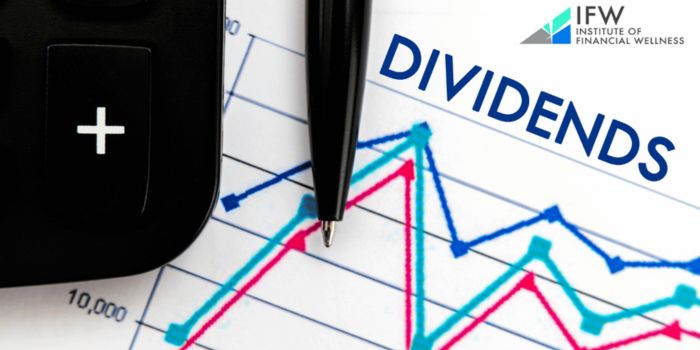If you’re thinking about retirement, chances are you’ve thought about living off of stock dividends. And you’re not alone. A lot of investors look to high-dividend stocks as a means of generating an income in retirement. It’s the best form of passive income after all. Dividend-paying stocks offer the perfect combination of capital appreciation and regular dividends, so finding the best ones is essential for creating a well-rounded portfolio. In fact, our custom and comprehensive Retirement Roadmap Experience allows you to ask these kinds of questions to a real person. And our retirement webinar is a great way to learn more!
Feel free to sign up on the links above. This article explains how to measure different metrics when searching out top dividend stock picks, such as locating “Dividend Aristocrats”, ultimately giving investors all they need to successfully start their journey into profitable dividend investing!
Key Takeaways
- Dividend stocks can be a reliable option for retirement income with careful consideration of dividend yield and payments.
- Evaluate financial stability, growth potential, dividend yield & payout ratio to make informed decisions when building a secure portfolio.
- Consider the pros/cons between individual stocks & funds. Monitor regularly to optimize returns and reduce risk.
Understanding Dividend Stocks
Dividend stocks can be an attractive option for income investors who are looking to receive regular payments. To their retirement funds. These shares represent companies that distribute some of the profits among shareholders through dividends and tend to have higher stock prices with annual dividend payouts measured by dividing the yearly payout by per-share amounts. There are three primary ways people invest in these stocks: mutual funds, exchange-traded funds (ETFs), or individual picks.
The best dividend stocks usually come from dependable businesses which also increase their distributions over time – yielding between 2% and 5%. While a high yield may seem great, it could mean poor management decisions on handing out too much relative to financial fundamentals, as well as a declining share price going down simultaneously.
Including them in your portfolio should involve examining the relevant metrics, such as their yield calculation while seeking firms able to provide consistent dividends throughout longer periods of time. What can you do? Diversifying helps reduce any additional risks related to one single stock potentially crashing faster than others around it.
Lastly, when not requiring quick liquidity, you might want to consider reinvesting extra money received instead so they will continue growing over time until needed later on during life events like college tuition fees, etc.
10 Best Dividend Stocks for September 2023

For income investors seeking to augment their retirement savings, the following list presents 10 high-dividend stocks for September 2023 that have been carefully chosen based on their dividend yield, financial strength, and potential growth. These include:
- Coventry (12.82% annual dividend)
- Chicago Atlantic Real Estate Finance Inc.
- Dynex Capital with a 12% annual dividend yield
- Cal-Maine Foods Inc.
- Arbor Realty Trust’s impressive 10.90%
- Franklin BSP Realty Trust’s strong 10.04 % cash flow-backed dividends
- Tredegar Corporation providing a 9th-anniversary return rate
- Devon Energy offering an attractive reward of 9%.
Additionally, here are 8 more high-dividend stocks that have, as of the date of writing, offered great returns.
Two other corporations equally leading in this field are Kronos Worldwide and Ready Capital, which is at the top spot with the same rates of percentage increases in returns for investors every year. Before buying these excellent choice options, buy these excellent choices. It is highly recommended to assess stability and possible progression before embarking upon investing in any one particular stock.
Evaluating Dividend Stocks: Key Metrics

Analyzing dividend stocks demands an investigation of essential metrics like stock price, annual dividend yield, payout ratio, and financial stability. The dividend yield is calculated by dividing the yearly dividends paid to shareholders by a company’s individual stock value in order to determine its attractiveness to investors.
Another critical factor when examining these equities is looking at what proportion of earnings per share go towards paying out dividends – known as the payout ratio. Under 60% implies sustainability with potential rewards for those purchasing such stocks.
Is there anything else to look out for? Yes! Investors should also keep close tabs on consistent years of steadily growing shares paid by companies (like Aflac recently did through November 2022) [1]. This serves as evidence that they are dedicated to creating shareholder value while their fiscal health remains stable enough to not cut or suspend them going forward, thereby reducing investor concerns over income reliability from ownership stakes.
Looking into every aspect mentioned above can assist savers in making educated choices and assembling a sound portfolio made up of mostly yielding asset classes suitable during retirement periods without risks associated with arbitrary cutting or lowering payouts unexpectedly.
Building a Diversified Dividend Portfolio

Let’s take action! Investing in a diversified dividend portfolio is an effective way for investors to generate reliable income streams. This strategy consists of selecting stocks across multiple sectors, such as technology, healthcare, utilities, and consumer goods, and creating a balance between high-yield and secure dividend payers. Diversifying reduces the risk associated with investing too much in one stock or sector so that investments are more resilient during market downturns.
One approach towards achieving diversification is by putting money into various industries’ respective dividend stocks – this helps minimize financial damage should any single industry suffer losses due to external factors like decreased prices (as seen recently with natural gas) [2].
Another solution could be found through mutual funds or ETFs, which contain bundles of different dividends paying out regularly despite how certain markets may behave at given times throughout the year, thus helping ensure your incomes remain steady over time without requiring extensive research on individual company information firsthand.
By constructing a varied portfolio based around securities providing payments both frequently and reliably – whether it’s singularly owned stock shares or partaking within collective finance offerings, people who invest their resources appropriately will have no issues attaining long-term returns, whatever current conditions might demand elsewhere outside their carefully selected range!
Dividend Aristocrats: The Cream of the Crop

Investing in Dividend Aristocrats can provide investors with a solid source of income, thanks to their steady history of raising dividends. These elite companies are part of the S&P 500 Index and have hiked payouts for at least 25 years, demonstrating financial stability that keeps shareholders happy.
Examples such as Atmos Energy’s 36-year growth streak or Emerson Electric’s 5% compound annual dividend highlight how reliable these stocks really are [3]. International Business Machines (IBM) recently became an official member too. Its impressive track record gives it added credibility when it comes to dependable payments over time due to strong cash flows and low payout ratios.
These investments offer potential benefits like higher total returns than regular portfolios while reducing volatility levels—something which is especially important when nearing retirement age!
By considering respected names from this index into your finances later down the line, you could see more reward than what typical equities give along with less risk attached compared to traditional investing methods—allowing one’s life savings on those golden days after work remain both secure and growing steadily instead of puttingtering out quickly!
Tax Implications of Dividend Investing
It is essential to understand the taxation implications of investing in dividend stocks as this can have different outcomes based on the type of account used and investors’ income level, which is why contacting experts like The Institute of Financial Wellness is essential.
Dividends are divided into qualified dividends, which get more beneficial tax treatment with a max rate of 20%, or ordinary dividends that come under a 37% maximum rate for the year 2023 [4]. The ex-dividend date has a big role when it comes to eligibility rules concerning future dividend payments. If you buy shares after this time, then you become ineligible for such remunerations.
To reduce any taxes when buying these securities, use tax-advantaged accounts like IRAs or 401(k)s – allowing your investments to develop without added pressure from levies on dividends.

Dividend Reinvestment Plans (DRIPs)
Dividend Reinvestment Plans (DRIPs) provide investors with the opportunity to compound their returns over time. Through this method of automatic reinvesting, dividends are used to purchase additional shares, which results in an accumulation of both more stock and greater dividend payouts.
This can be a highly rewarding approach for long-term investing as there is potential for considerable growth on initial investments without incurring transaction fees paid out by brokers.
Yet DRIPs present certain complexities that need monitoring. Keeping track of share amounts and income from dividends requires ongoing attention from investors if they wish to take full advantage of what these plans offer them.
Nevertheless, those looking towards retirement should consider how useful DRIPs could be when it comes to creating a portfolio rich in recurrent earnings down the line because any extra effort now stands to increase profits significantly later on!
Dividend Stocks vs. Dividend Funds: Pros and Cons
Investors need to carefully weigh the pros and cons when deciding whether to put their money into individual dividend stocks or in dividend funds, such as mutual funds or ETFs. Individual stocks have a potential for higher yields and lower costs compared with other stocks.
On their part, dividend investing options make them an attractive choice, especially if tailored around someone’s risk tolerance. They require extensive research on each stock chosen by investors, whereas dividend funds provide ready diversification, meaning no single diminished return can affect one’s income stream too much due to others holding up the fort while also offering experienced management, ensuring portfolios align well with intended objectives.
The best approach would be allocating most of one’s portfolio into indexing strategies coupled with diversely invested individual dividend stocks/funds that allow for greater growth prospects along with consistent revenue gains through interest payments.
Risks Associated with High-Dividend Stocks

For investors looking to generate a steady income stream, high-dividend stocks can prove attractive. Yet, these investments come with the risk of an unsustainable yield or falling share prices. To ensure success in this area and avoid risks as much as possible, diligent research on the company’s background is essential before investing in such stocks.
This includes examining their dividend history, financial health and growth potential so that one may construct a well-thought-out portfolio for retirement purposes. Payout ratios below 60% suggest sustainability when it comes to dividends. Thus proving beneficial over time if maintained properly by shareholders, both young and old alike!
How to Monitor and Adjust Your Dividend Portfolio
It is essential to systematically review your dividend portfolio to guarantee that it continues to match up with what you are aiming for financially. Monitor these payments through the announcements and financial reports of companies or use an online tool for timely updates. Utilize instruments, such as portfolio management tools, which enable analyzing and tracking performance levels with respect to stocks paying dividends from time to time.
Examine the growth rate concerning dividend returns along with evaluating general diversification within one’s holdings constantly so those investments continue keeping pace with objectives determined earlier on by investors themselves. In case a stock does not meet expectations or there has been weak yielding activity witnessed recently, adjustments have got to be made towards reconstituting a better balance between risk and reward while achieving steady income flow during the post-retirement period using a reliable yield generation technique over here as well.
Stocks that Pay Dividends
Investors may want to look into the S&P 500 Dividend Aristocrats index for a comprehensive list of stocks that pay dividends. Composed of 67 companies from the S&P 500, these long-time dividend growth achievers have been increasing their payouts uninterruptedly over at least 25 years, and some for even more than 99! With dedicated shareholders and financial solidity, they can offer reliable income as part of any retirement portfolio.
Examples include Atmos Energy with 36 consecutive annual raises (8.8% increase in November 2022) [3], Emerson Electric boasting a 20-year compounded rate of 5%, or McCormick & Co., providing a steady 9% rise since five years ago when it’s already on its way up 99th year running dividend payments – making them outstanding examples altogether known under ‘Dividend Aristocrats’.
Thanks to strong cash flows matched by comparatively low payout ratios, among many other features, investing in such notable names would translate into lower risk yet still provide dependable streamlining returns over time. Therefore, ensuring sustainability befitting your future planning requirements while incorporating high-quality assets weaved around dividend-paying aristocratic structures within one’s portfolio is advantageous indeed!

Institute of Financial Wellness
The Institute of Financial Wellness serves as an all-encompassing network offering financial education, services, and resources. Through their guidance, investors are able to create a lucrative dividend investing approach that will help them in retirement. By tapping into the institute’s information, tools, and additional components, they can construct investment decisions with confidence while crafting a successful return on investments for later years.
Full Summary
To wrap up, constructing a dividend investment strategy for retirement involves becoming familiar with the essentials of dividend stocks, selecting dependable paying companies that distribute them and diversifying your investments. Managing these is essential to generate stability in earnings while also achieving financial objectives according to one’s risk appetite.
It does not matter whether you choose individual dividend stocks or funds when it comes down to investing. Remaining educated on how things go about will ensure long-term profitability as well as secure finances during those golden years.
Achieve Wealth Unlimited in Your Retirement! The IFW Retirement Roadmap Experience Will Help You…Get There! 80% of people who watch find ways to significantly improve their retirement.
Frequently Asked Questions
What are the best stocks that pay dividends?
Maximizing returns can be achieved by investing in high-yielding stocks. Our selection of the most desirable dividend stocks includes some renowned names like Verizon Communications, Pfizer, Comcast, Wells Fargo and Gilead Sciences. As well as Medtronic, Devon Energy and Dow. All these companies are paying a noteworthy dividend to their shareholders.
How do I make $1000 a month in dividends?
In order to receive $1,000 in dividend income every month, you should own at least 30 stocks spanning 10 sectors of the market. Each stock would then account for 3.33% of your portfolio and yield approximately $400 annually – amounting to a total payout of around $12,000 per year or even $1000 each month.
What stocks pay dividends right now?
Among the highest dividend stocks to invest in currently are those of Verizon Communications (VZ), Pfizer (PFE), Comcast (CMCSA) and Wells Fargo, as well as Gilead Sciences(GILD), Medtronic(MDT), Devon Energy(DVN) and Dow Inc.(DOW). All these firms offer a great opportunity for investors who wish to maximize their returns through high dividends.
What stocks pay a 5% dividend?
Investors searching for dividend yields of more than 5% may find appealing options in the likes of Clearway Energy, Kinder Morgan, Verizon Communications Inc., W. P. Carey, Walgreens, Altria Group and Philip Morris International Inc., as well as Prudential Financial Inc., Enterprise Products Partners L.P. and The Williams Companies respectively.
What stock pays the highest dividend?
Pioneer Natural Resources (PXD) offers shareholders the highest dividend out of all with a remarkable quarterly yield per share amounting to $0.90.




